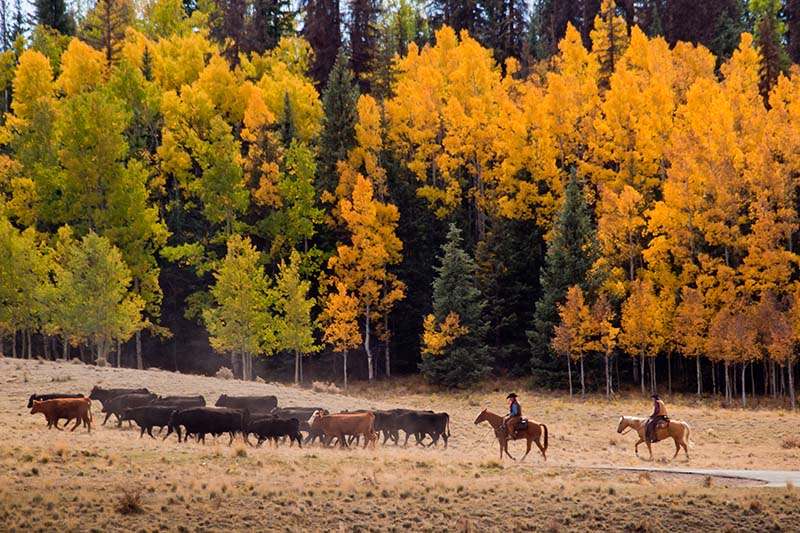Taking On the Inequities of Rural Life

By Ned Calonge, MD, MPH
Editor’s note: This post originally appeared on Health Affairs Blog (GrantWatch section) on July 30, 2015.
Is rural living good for your health? If you’re one of a quarter billion Americans who live in metro areas, you may be conjuring up an idyll of burbling streams and fresh air.
But rural Americans are more likely than city dwellers to live in poverty, according to federal data compiled by the National Rural Health Association (NRHA). Rural poverty rates are especially high among ethnic minorities and children, according to an analysis of Census Bureau data by the US Department of Agriculture.
People living in rural counties also frequently have poor access to physicians and behavioral health providers, are more likely to smoke and abuse alcohol, and are at higher risk of suicide and of dying in car accidents, the NRHA has found.
Denise Gonzales, program director at Con Alma Health Foundation, which funds across New Mexico, and Susan Wilger, director of programs at the National Center for Frontier Communities (NCFC), know these statistics well. Gonzales and Wilger came from New Mexico to speak to Colorado nonprofit leaders and health policy advocates in Denver at a Health Equity Learning Series event on July 23, presented by The Trust. The presentation was streamed live to communities around Colorado, including to rural and frontier towns like Trinidad, Gunnison, and Yuma. (Complete video of the presentations, slide decks and other materials are available online.)
Con Alma, under the guidance of Executive Director Dolores Roybal, has been a national leader among grantmakers working to advance health equity in rural areas. One of Con Alma’s key partners and grantees has been the NCFC, which advocates for people living in frontier communities—generally defined as those with fewer than six people per square mile.
Collaboration with rural communities is one way for grantmakers to begin to address rural health disparities, said Gonzales. “We have projects that come from the communities, and we empower them to make decisions,” she said.
Giving that kind of power to rural communities is important for a number of reasons. (It also aligns closely with The Trust’s new Community Partnerships work.) One reason is that, as Wilger pointed out, rural communities often lack economic and political might because of their small populations.
Part of the NCFC’s work has been to advocate for better access to vital services for people living in rural and frontier communities, where long distances and lengthy travel times are a barrier to good health.
“We don’t expect to have all services in the neighborhoods where we live,” said Wilger—malls and airports aren’t the norm, nor necessary—“but [it’s important to] at least have access to very basic services—access to food, access to emergency care.”
One of the ironies of rural life, Wilger noted, is that areas that bear the burden of food production frequently aren’t reaping the benefits. The same farm workers who bring food to the tables of city dwellers are themselves earning too little to eat nutritious food. Wilger said there is a persistently high reliance on food pantries and federal food assistance in some of the communities where the NCFC works—even among the working poor.
Just as it’s useful for grantmakers and nonprofits to work closely with rural communities, Wilger believes it’s important for those communities to collaborate among themselves.
“We found that we can only do so much at a county level because our voice is so small,” said Wilger. Instead, she asked, “what would happen if we started to collaborate at a regional level?”
Both Con Alma and the NCFC share a focus on bringing together local leaders, nonprofits, and government agencies that work in rural areas. Wilger pointed out that, when working with such small populations, duplication of efforts can be especially wasteful.
Looking ahead, a shifting demographic is likely to change the face of rural New Mexico, Colorado, and much of America.
Rural counties are aging. In Colorado, people living in rural counties are already older on average than those in urban areas, with a growing number who are over the age of sixty-five, according to the Colorado Rural Health Center. In New Mexico, food pantries have seen an influx of seniors who are hungry, Wilger noted.
But for now, the best efforts to address rural health inequities, as identified by Gonzales and Wilger, remain the same no matter what the age group: Invest in communities, advocate for systemic change, and, of course, work together.
Our Health Equity Learning Series continues on Sept. 17 and will feature john a. powell, Executive Director of the Haas Institute for a Fair and Inclusive Society. The event will again be live-streamed from the History Colorado Center in Denver. Sign up for our email list to be notified when in-person and online event registration opens. Additionally, all of our past Health Equity Learning Series presentations are online, featuring full video coverage, presentation materials and more. I look forward to having you join us in September.